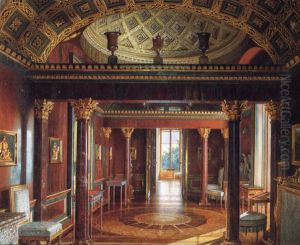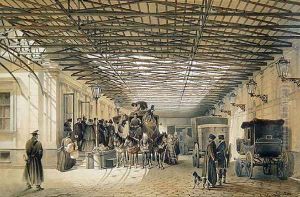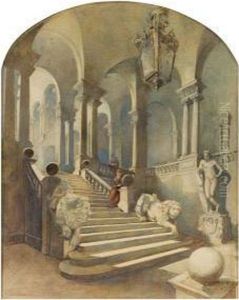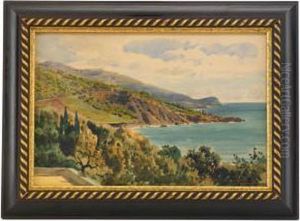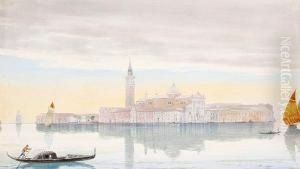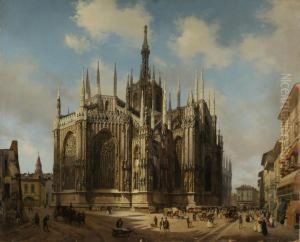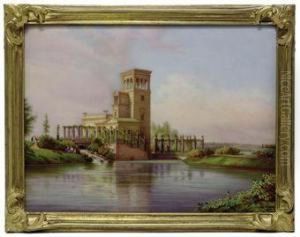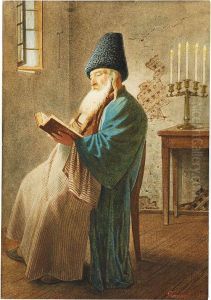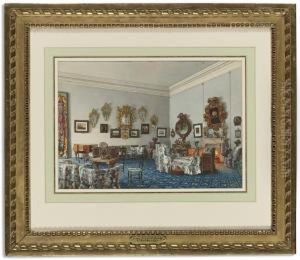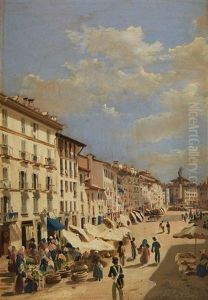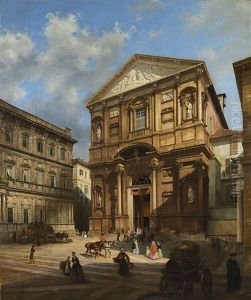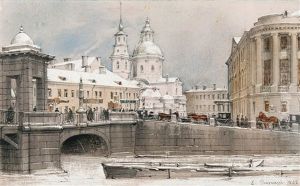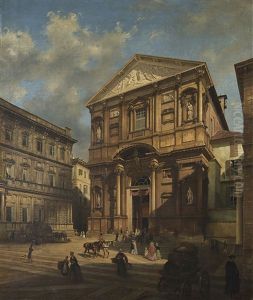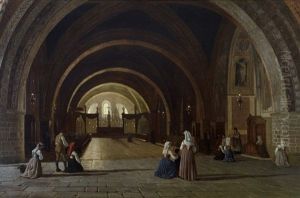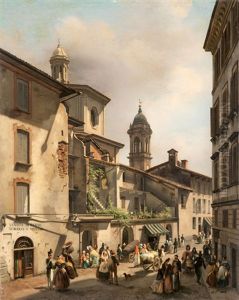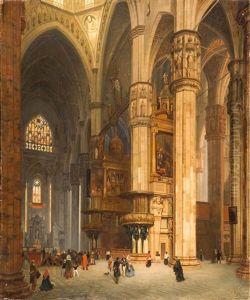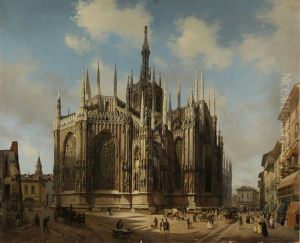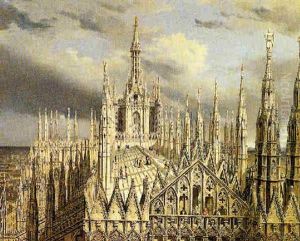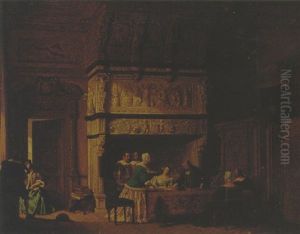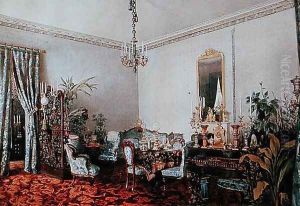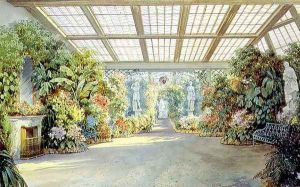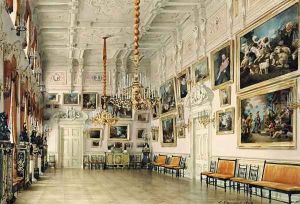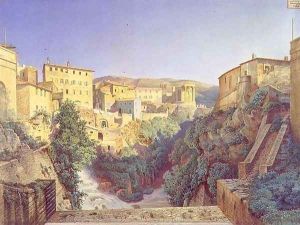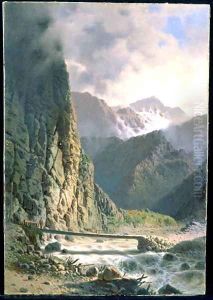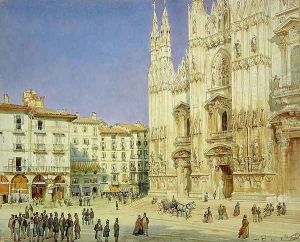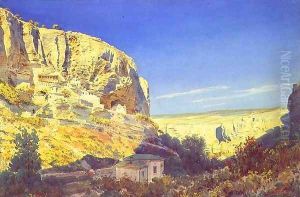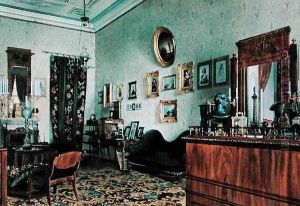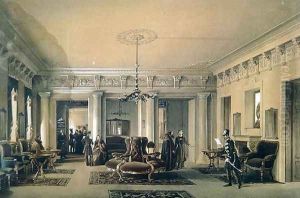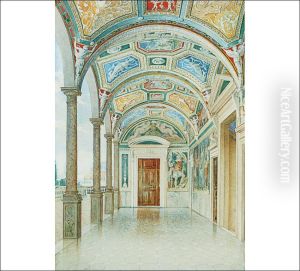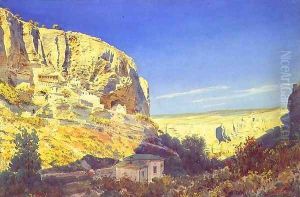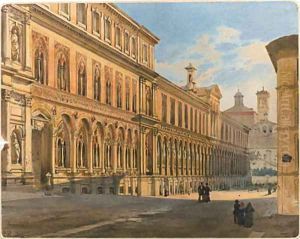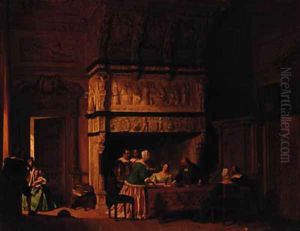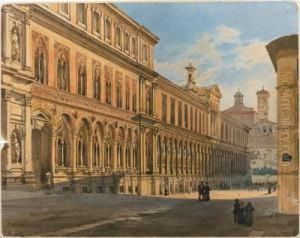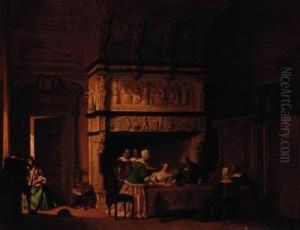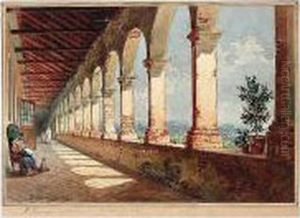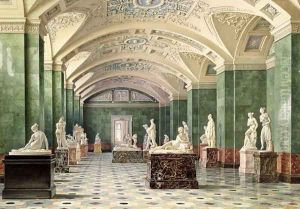Luigi (Ludwig Osipovich) Premazzi Paintings
Luigi (Ludwig Osipovich) Premazzi was an Italian artist known for his watercolor paintings and architectural drawings. Born on May 6, 1814, in Milan, Italy, Premazzi developed an interest in art from a young age. He initially studied at the Brera Academy in Milan and honed his skills under the tutelage of renowned artists of the time.
Premazzi's early work was largely influenced by the Romantic movement, which was prevalent in Europe during the early 19th century. However, as his style matured, he became more focused on architectural and interior subjects. His precise and detailed depictions of buildings and interiors were much admired and contributed to his reputation as a skilled watercolorist.
In 1840, Premazzi moved to Russia, which proved to be a significant turning point in his career. He quickly became a favored artist among the Russian aristocracy, including the Imperial family. His work during this period often involved commissions from the Russian court, which allowed him to create a series of works depicting the luxurious interiors of palaces and grand estates.
One of Premazzi's notable patrons was Emperor Nicholas I, for whom he produced several pieces. After Nicholas I's death, Premazzi continued to find favor with his successor, Alexander II. During his time in Russia, he also engaged with the local art community and became a member of the Imperial Academy of Arts.
Premazzi's meticulous approach to his watercolors, with their fine attention to detail and subtle use of light and color, was particularly well-suited to the grandeur of the settings he painted. His works not only highlight his artistic skill but also serve as historical documents, providing insight into the opulent lifestyles of the Russian elite during the 19th century.
The Italian artist spent most of his later life in Russia, where he passed away on April 8, 1891, in Saint Petersburg. Luigi Premazzi left behind a rich legacy of artwork that continues to be appreciated for its historical value and artistic excellence. His paintings remain a testament to the cross-cultural exchange between Italy and Russia and showcase the mutual influences that enriched both countries' artistic traditions.
